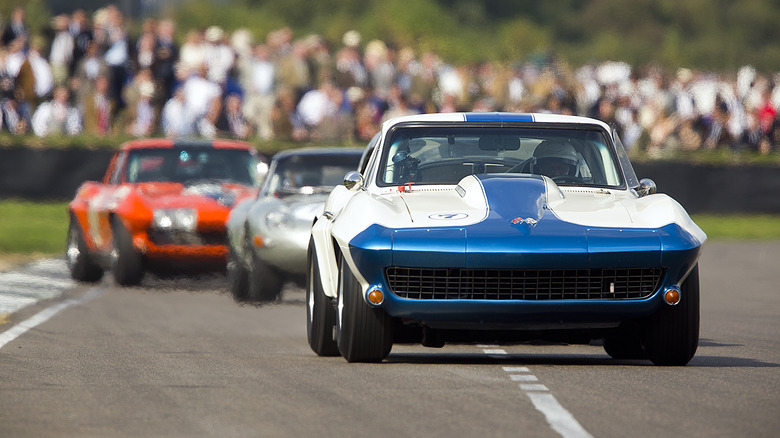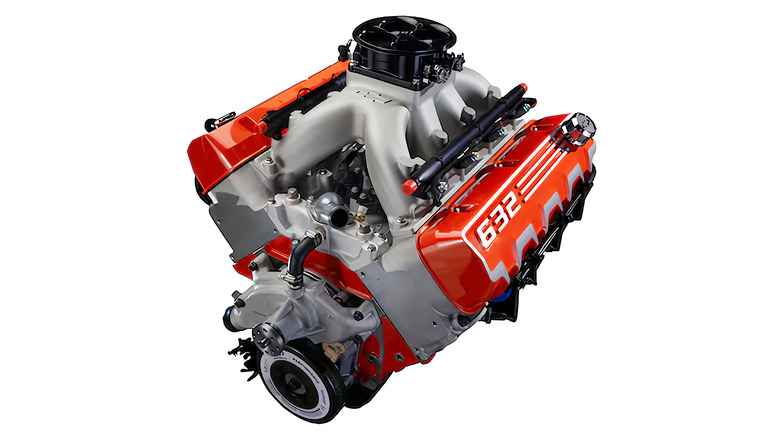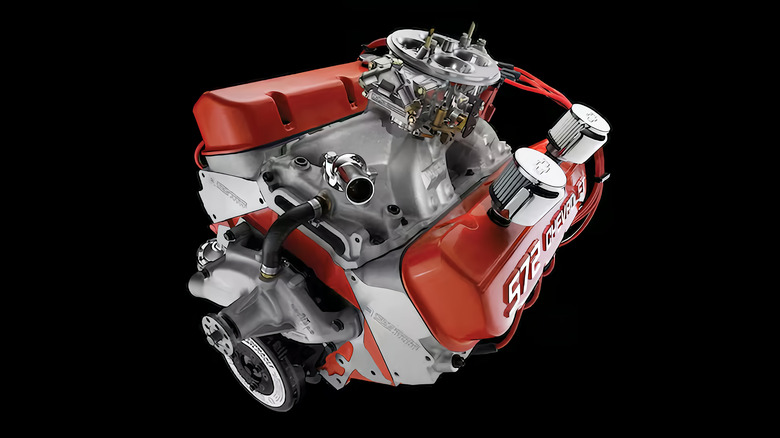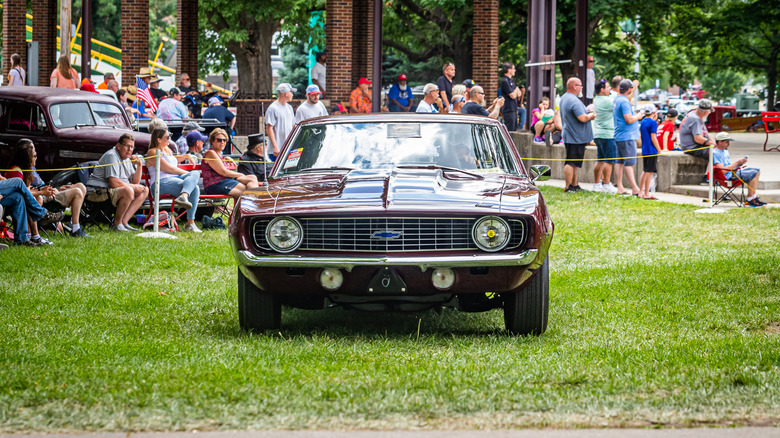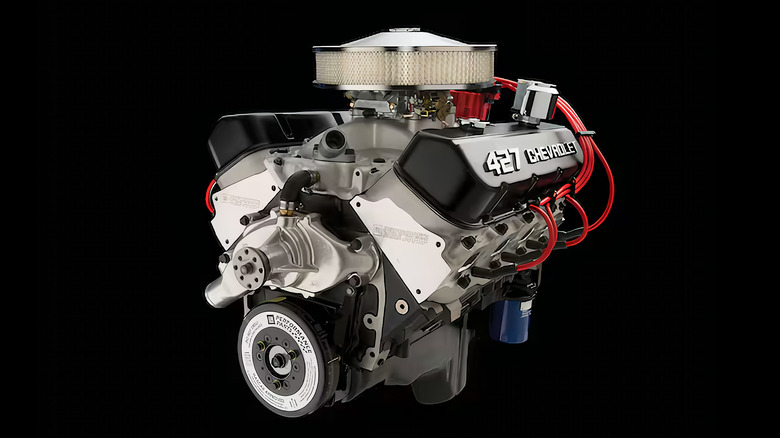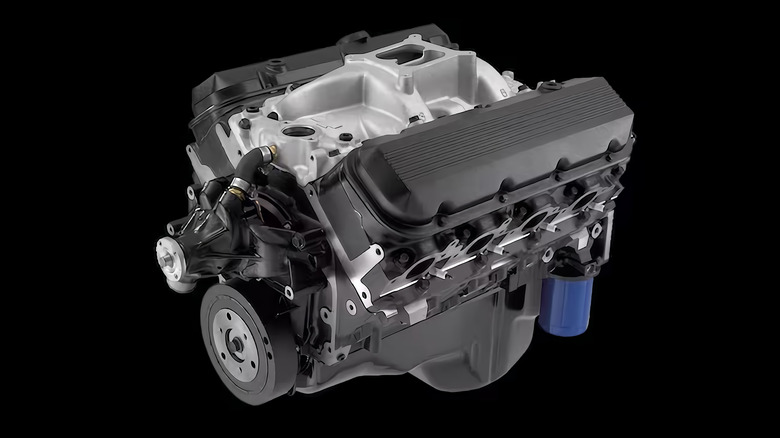5 Of The Most Powerful Big-Block Engines Chevy Ever Built
Chevrolet has had many accomplishments over the years, from being the winningest brand in NASCAR Cup Series history to producing the world's first affordable fully automatic transmission. However, one of Chevy's most notable achievements has to be the development of the big-block and small-block engines, two categories that have become staples in the vocabulary of car enthusiasts and mechanics worldwide.
The fundamental difference between big-block and small-block engines lies in their size and the space they occupy within a vehicle's engine bay. Big-block engines, as the name suggests, are larger and possess more significant displacement, meaning they can process more air and fuel in a single cycle compared to their small-block counterparts. This usually translates into more power and torque, making big-block engines the go-to choice for high-performance applications like racing or heavy-duty hauling. On the other hand, small-block engines are more compact. Benefits lie in the weight savings and fuel efficiency, but the engines still provide considerable performance.
It's hard to pick a favorite, but the Chevy big-block series holds a special place for those of us who love speed and performance. These are five of the most powerful big block engines Chevy has built over the decades.
Chevrolet ZZ632
The ZZ632, introduced in the middle of a booming interest in crate engines back in 2021, really stands out with its performance metrics. "Stands out" might even be putting it mildly since this engine is Chevrolet's most powerful creation.
The ZZ632's origins trace back to the well-received ZZ572 block, which evolved to achieve the impressive output that we get today. This big block V8, with a 632 cubic-inch (10.35 liters) displacement, generates a monumental 1,004 horsepower and 876 pound-feet of torque on 93-octane gas. This power is attainable at around 6,600 rpm, inching close to the engine's 7,000 rpm limit. Besides the heavy specs, the engineering of the ZZ632 is also noteworthy. Unlike traditional big blocks with varying port shapes, the ZZ632 has symmetrical intake and exhaust ports, which, in theory, balances power across all cylinders.
Some interesting personal projects have used the ZZ632, like YouTube channel Hoonigan's third-gen Z28 Chevy Camaro, but the engine also found a prominent place in Chevrolet's 2023 COPO Camaro, a factory-built drag car, where it replaced the outgoing 572 V-8.
That being said, the engine's power and size come with some trade-offs, such as increased fuel and oil requirements, which is expected given the performance-oriented design. The ZZ632 is also a tad exclusive as a crate engine, and its premium price point sits just under $33,000. Still, for those looking for unparalleled power, especially in racing or custom builds, the ZZ632 is the most powerful big block engine by Chevy you can get.
Chevrolet ZZ572
Coming from the ZZ632, the next logical entry for the most powerful Chevy big blocks is the ZZ572. With an impressive 572 cubic inches of displacement, this engine has two mighty variants: the ZZ572/620 and the ZZ572/720R. The former, designed with a street focus, generates 620 horsepower and 650 lb-ft of torque, ideal for several applications from muscle cars to marine vessels. The latter is a race-geared engine that spins up performance with 720 horsepower.
The ZZ572 engine's architecture will also interest enthusiasts. It features a tall-deck Generation VI Bow Tie big block, a tough 4340 steel crankshaft, and high-performance pistons. You can also thank the rectangular-port aluminum cylinder heads and high-lift camshaft for the engine's output.
Like the ZZ632, this is a crate engine, which is great for anyone looking to inject significant amounts of power into their project cars. However, it's not a leap to say that such power comes with challenges. Given the engine's immense displacement and output, buyers can expect above-average maintenance and a strong supporting infrastructure, from fuel systems to exhaust setups. The 720R version has a price point of over $20,000, while the 572/620 hovers around $19,500.
Chevrolet ZL1
With roots in the high-octane world of Can-Am road racing, the ZL1 wasn't initially designed for the streets. It features an all-aluminum construction, contributing to a significant weight reduction compared to its iron counterparts, improving the balance and performance of whatever car it was in. With a 12.0:1 compression ratio and a 430 horsepower rating — though MotorTrend suggests that real-world estimates bring the figure closer to 550 horsepower — the ZL1 was an absolute beast on the track. It also had unique parts like a high-rise intake manifold and a hefty 850-cfm Holley carburetor to drive its race-bred heritage home.
These performance benefits of the engine inspired a visionary dealer from Illinois, Fred Gibb, to create the legendary Camaro ZL1 through the COPO special-order system. Only 69 cars were constructed that year, making them extraordinarily rare. The engine's impressive power-to-weight ratio gave the car a fierce presence on the drag strip.
That being said, the ZL1 Camaro was a challenging sell initially, mainly due to its hefty price tag. The engine upgrade alone doubled the vehicle's cost. Over time, though, the ZL1's reputation grew, making it a coveted classic. Chevrolet continued to honor the ZL1 legacy, reintroducing the nameplate with more modern versions of the Camaro, but without the 427 big block that made the original ZL1 a legend.
Chevrolet L88
Having been born and raised in the feverish 1960s, when American manufacturers were in a never-ending search for horsepower dominance, it's hardly a surprise that the L88 evolved to be one of the most fearsome V8 engines, particularly adored in the Corvette family.
The L88 debuted in 1967 and was designed to get the most power out of its 427 cubic-inch big block. It's easy to confuse the 427 engines, but here's the gist of it: The L88 is the high-performance one from the '60s. The ZL1 is the lighter, limited edition one. The ZZ427 is Chevy's modern crate engine that pays homage to the classics. Unlike its competitors, the L88 had stronger internals, such as a reinforced 1053 crank, forged steel connecting rods, and forged solid pistons to sustain its 12.5:1 compression ratio. It also had a race-derived mechanical flat-tappet camshaft and aluminum heads. The L88's power output was grossly underrated at 430 horsepower — a conservative figure that, like the ZL1, hides a potential capability of 550 to 570 horsepower, according to MotorTrend.
For most, this engine will always be connected to the iconic L88 Corvette. This car was only available from 1967 to 1969, and it was more than just the engine that came in it. It was a special package with a bag of performance-oriented features like heavy-duty suspension and improved brakes. However, because of its race-bred origin, it was a rare sight, with only 216 units made.
Chevrolet 454
Having talked about the 427 V8s, it's only natural to talk about Chevy's 454 engine, which actually evolved from the former. Originally used in icons like the Chevrolet Chevelle and the Corvette, the 454 quickly gained fame, outrunning everything, including an oil crisis in the 1970s. The 454 found its home not just in muscle cars but also in Chevrolet and GM trucks.
Even after being discontinued in production vehicles after 2001, this engine lives on, especially in drag racing and among classic car enthusiasts. Interestingly, you can even still buy a 454 big-block V8 crate engine straight from Chevrolet. One reason for this immortality is the specs — the 454 maintained a consistent bore and stroke throughout its production, proud of the old-school V8 design. With a cast-iron engine block and aluminum cylinder heads, this engine was really built to last. It also came in various models, like the LS5 and LS6, offering differing compression ratios for different performance needs. The 454 HO that you can get from Chevrolet advertises 438 hp at 5300 rpm and 500 lb-ft of torque at 3500 rpm.
However, every coin has two sides. The fuel efficiency was a notable concern, especially during the oil crisis. Still, the specs, availability of parts, and the potential for customization have kept the 454 relevant even in 2024.
